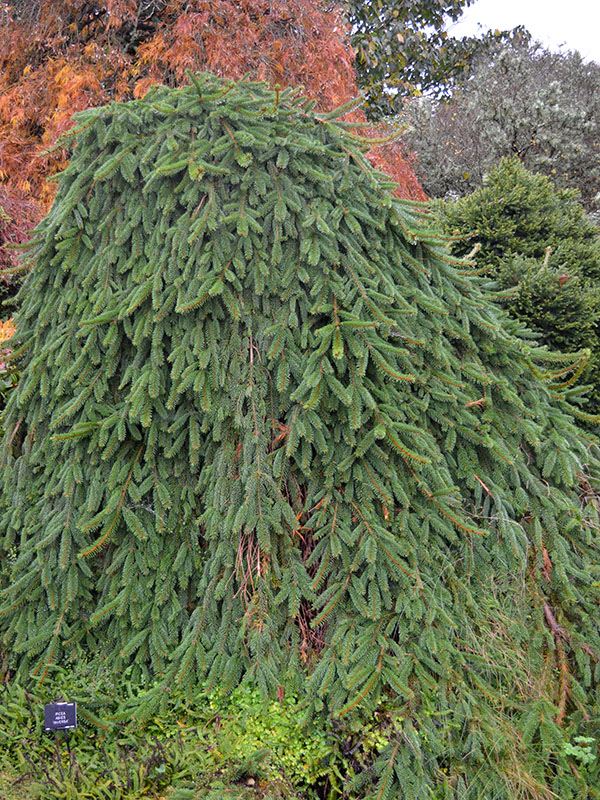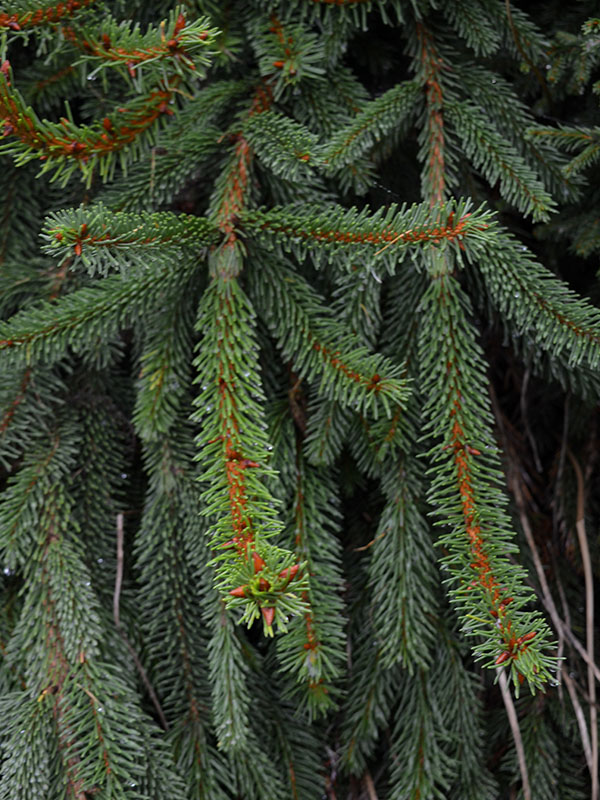
Woody > Picea > Picea abies > Picea abies 'Inversa'
Picea abies
'Inversa'
Inversa Norway Spruce
| Family |
| Pinaceae |
| Genus |
| Picea |
| Species |
| abies |
| Cultivar |
| 'Inversa' |
| Category |
| Woody |
| Type |
| Tree (evergreen) |
| Pronunciation |
| USDA Hardiness Zone |
| 1a - 6a |
| Canadian Hardiness Zone |
| 0a - 5b |
| RHS Hardiness Zone |
| H7 |
| Temperature (°C) |
| -51 - (-21) |
| Temperature (°F) |
| -60 - (-5) |
| Height |
| 9 - 12 m |
| Spread |
| 3 - 4.5 m |
Photographs
Description and Growing Information
Flowering Period
| General Description |
| Picea abies 'Inversa' is a woody evergreen tree that seems awkward at first glance but it is actually one of the most beautiful of the weeping trees. |
| Cultivation |
| Grow in full sun, in well-drained soil. |
| Growth |
| Slow |
| ID Characteristic |
| Distinct weeping form with large, elongated cones and dark green needles. |
| Pests |
| Mites, aphids and bagworms are all possible problems. |
| Habitat |
| Horticultural origin. |
| Flower/Leaf Bud Description |
| 3 - 7 mm, brown with a red-tinge. |
| Leaf Description |
| Alternate, simple, evergreen needle-like. |
| Flower Description |
| Inconspicuous, pink. |
| Fruit Description |
| 7.5 - 20 cm in diameter, ovoid, usually brown. |
| Notable Specimens |
| Fanshawe College. Botanical Garden, London, Ontario. Wakehurst Place, Ardingly, Haywards Heath, Sussex, England. |



